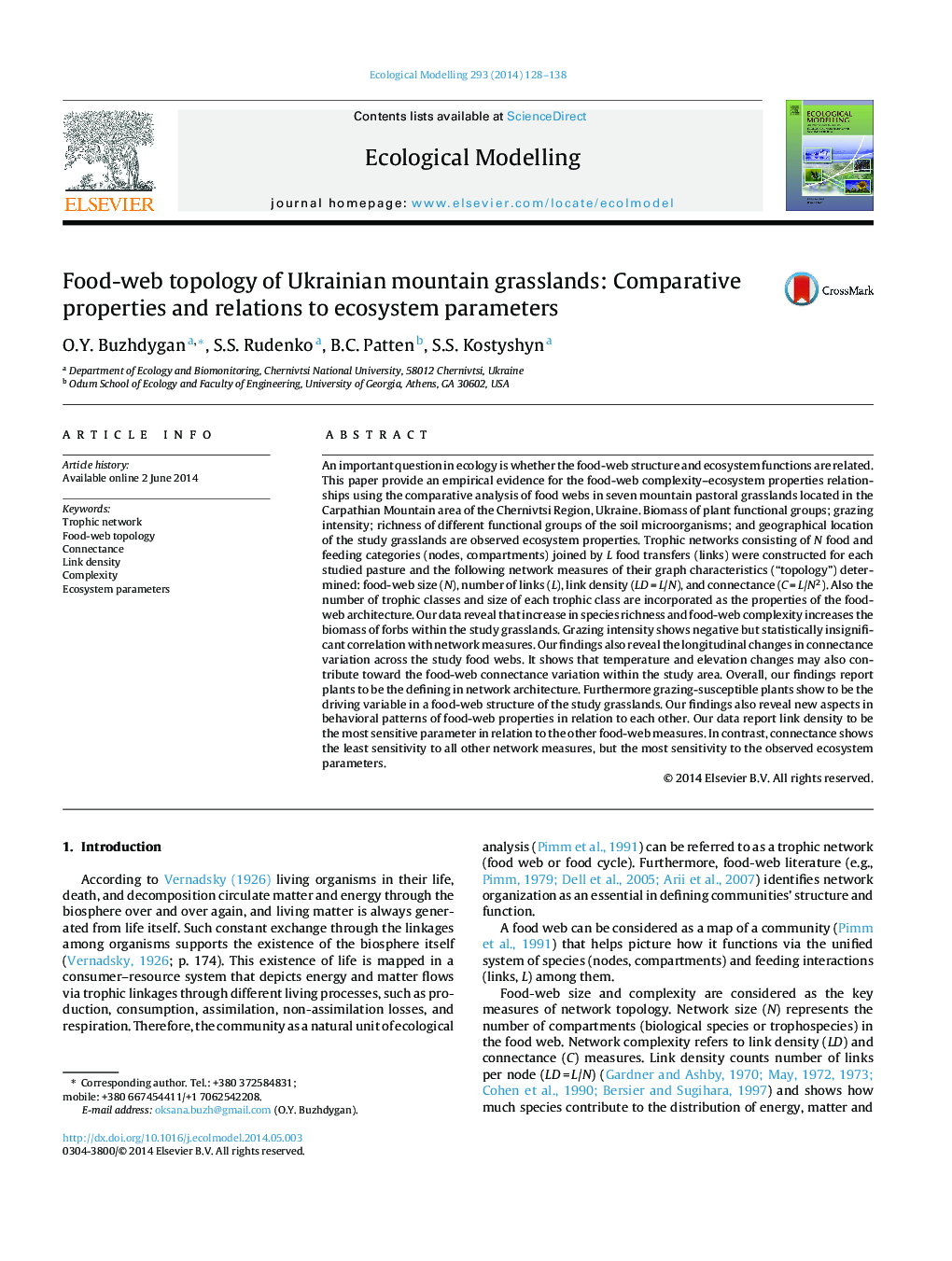| Article ID | Journal | Published Year | Pages | File Type |
|---|---|---|---|---|
| 4375798 | Ecological Modelling | 2014 | 11 Pages |
•We compare empirical food webs of seven mountain pastures of Carpathians, Ukraine.•We compare topological network measures and a set of pastoral ecosystem properties.•Link density is the main property expressing network topology of the study webs.•Producers show to be the principal group defining network architecture.•Network measures are correlated with plant biomass and richness of soil ray fungi.
An important question in ecology is whether the food-web structure and ecosystem functions are related. This paper provide an empirical evidence for the food-web complexity–ecosystem properties relationships using the comparative analysis of food webs in seven mountain pastoral grasslands located in the Carpathian Mountain area of the Chernivtsi Region, Ukraine. Biomass of plant functional groups; grazing intensity; richness of different functional groups of the soil microorganisms; and geographical location of the study grasslands are observed ecosystem properties. Trophic networks consisting of N food and feeding categories (nodes, compartments) joined by L food transfers (links) were constructed for each studied pasture and the following network measures of their graph characteristics (“topology”) determined: food-web size (N), number of links (L), link density (LD = L/N), and connectance (C = L/N2). Also the number of trophic classes and size of each trophic class are incorporated as the properties of the food-web architecture. Our data reveal that increase in species richness and food-web complexity increases the biomass of forbs within the study grasslands. Grazing intensity shows negative but statistically insignificant correlation with network measures. Our findings also reveal the longitudinal changes in connectance variation across the study food webs. It shows that temperature and elevation changes may also contribute toward the food-web connectance variation within the study area. Overall, our findings report plants to be the defining in network architecture. Furthermore grazing-susceptible plants show to be the driving variable in a food-web structure of the study grasslands. Our findings also reveal new aspects in behavioral patterns of food-web properties in relation to each other. Our data report link density to be the most sensitive parameter in relation to the other food-web measures. In contrast, connectance shows the least sensitivity to all other network measures, but the most sensitivity to the observed ecosystem parameters.
